Accepted Scientific Name: Cereus spegazzinii F.A.C.Weber
Monatsschr. Kakteenk. 9: 102. 1899
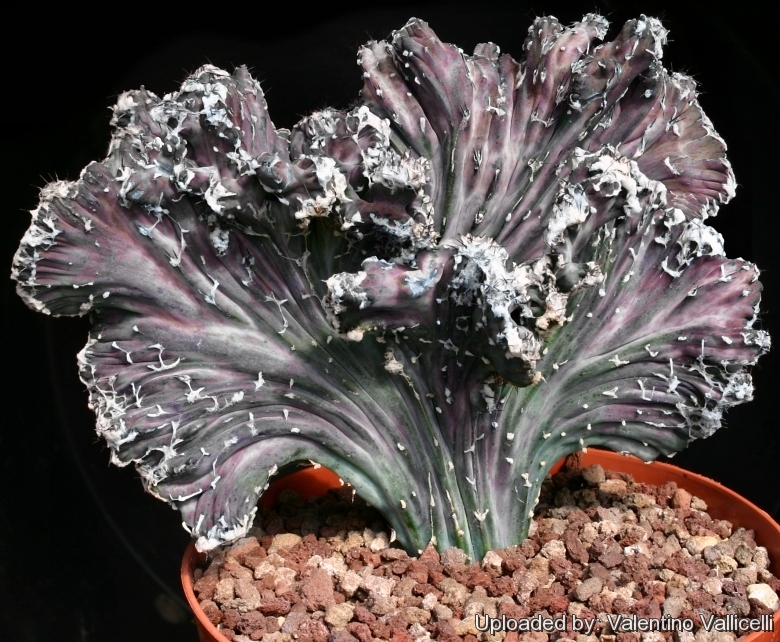
Cereus spegazzinii f. cristatus monstruosus Photo by: Valentino Vallicelli
This easy to grow plant is very attractive because of its spectacular purple-blue stems with pronounced sculpture effects. There also a similar crested form with blue-green marbled stems.
Origin and Habitat: Garden origin (Nursery produced cultivar)
Synonyms:
See all synonyms of Cereus spegazzinii
back
Accepted name in llifle Database:Cereus spegazzinii F.A.C.WeberMonatsschr. Kakteenk. 9: 102. 1899Synonymy: 18
back
Description: The typical Monvillea spegazziniiSN|7041]]SN|7041]] is a fast-growing slender shrubby cactus that has bluish stems that creep along the ground to form a shrub. There are two similar but slightly different crested forms that are now widely cultivated for their beautiful stem with pronounced sculpture effects.
Stems: Bluish-green that tinge purplish in full sun up to 25 cm tall and wide.
Roots: Tuberose and succulent, Even adventitious roots of Monvillea spegazziniiSN|7041]]SN|7041]] become succulent.
Flowers: 10 to 13 cm in length with a slender tube, reddish outer perianth segments and white inner ones. They arise from near the top on the sides of the stems; buds point upward but curve suddenly downward when the flowers open. They bloom at night.
Remarks: These plants produce monstrous crests, and crests occasionally produce normal shoots.
More...Subspecies, varieties, forms and cultivars of plants belonging to the Cereus spegazzinii group
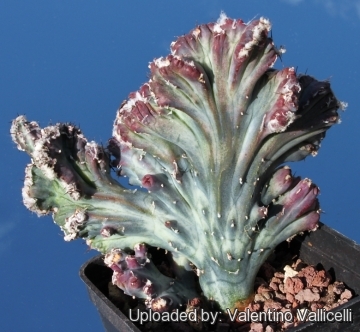 The epidermis is lovely marbled in blue and green, the tips are purple. Photo by: Valentino Vallicelli
The epidermis is lovely marbled in blue and green, the tips are purple. Photo by: Valentino Vallicelli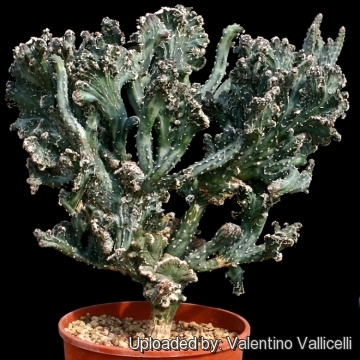 Cereus spegazzinii f. cristatus monstruosus Photo by: Valentino Vallicelli
Cereus spegazzinii f. cristatus monstruosus Photo by: Valentino Vallicelli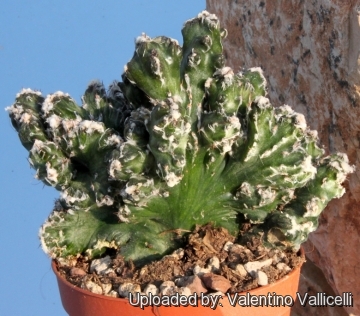 Cereus spegazzinii f. cristatus monstruosus Photo by: Valentino Vallicelli
Cereus spegazzinii f. cristatus monstruosus Photo by: Valentino Vallicelli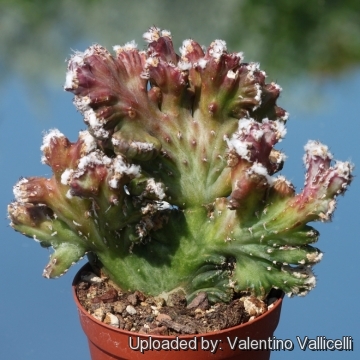 Cereus spegazzinii f. cristatus monstruosus Photo by: Valentino Vallicelli
Cereus spegazzinii f. cristatus monstruosus Photo by: Valentino Vallicelli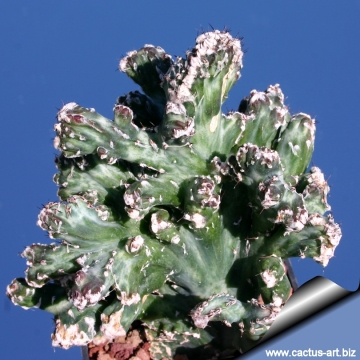 Cereus spegazzinii f. cristatus monstruosus Photo by: Cactus Art
Cereus spegazzinii f. cristatus monstruosus Photo by: Cactus Art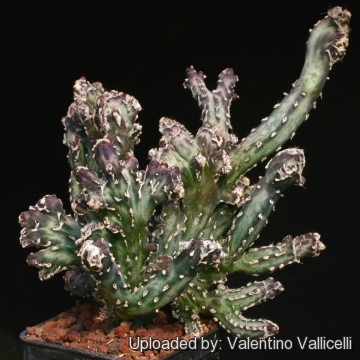 Cereus spegazzinii f. cristatus monstruosus Photo by: Valentino Vallicelli
Cereus spegazzinii f. cristatus monstruosus Photo by: Valentino VallicelliCultivation and Propagation: Produces best results in loose and very drained soil, rich in leafmold, and if sufficient water is supplied in warm weather a rather considerable growth can be made. It needs semi-shade. The plants will stand but little cold and require a minimum winter temperature of about 10° C. (but can resist for short period to 0° C). Growth is rapid, and supports are needed for the stems. The half‑erect habit of the moderately tall plants makes them desirable for middle foreground position in landscaping, while the comparatively small room needed for potted plants makes it an acceptable group for greenhouse culture.<br />
Crested growth: Unlike 'monstrose' varieties of plants, where the variation from normal growth is due to genetic mutation, crested growth can occur on normal plants. Sometimes it's due to variances in light intensity, or damage, but generally the causes are unknown. A crested plant may have some areas growing normally, and a cresting plant that looks like a brain, may revert to normal growth for no apparent reason. If you have any of the crested part left you need to remove the normal growth and leave the crested part behind this will need to be done regularly.
Propagation: By cuttings.
More...
















